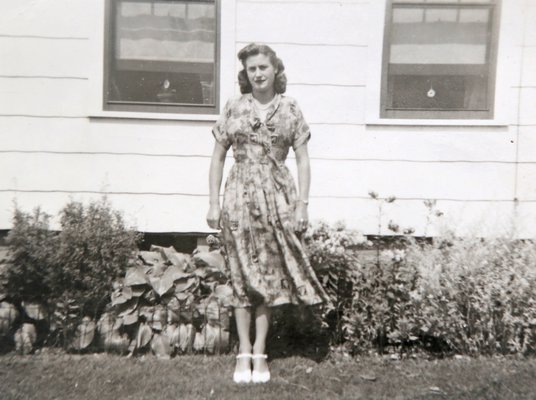
On the world stage, stories of people going missing in the United States are rare. And literally vanishing? That’s unheard of.
But that is exactly what happened on October 6, 1966, when Louise Pietrewicz left her family’s farm in Sagaponack—only to disappear and never be seen again.
She was a beloved member of her community in Cutchogue. She was a wife, and mother to an 11-year-old girl. It seems this would be a tragedy that tears a hamlet apart, a story that journalists dream about for their entire careers.
And, yet, this Thursday, October 26, is the first time it has ever been reported in the media.
“The whole thing strikes me as, ‘This can’t be true. She couldn’t have just vanished. This seems like another country where they don’t follow the rules and the laws,’” explained Steve Wick, the executive editor at the Times Review Media Group, which publishes The Suffolk Times, based in Mattituck, Riverhead News-Review, and Shelter Island Reporter. “But that’s exactly what happened here, and that’s what we’re going public with.”
The story will unfold in two parts: a 10,000-word investigative piece that will run in the The Suffolk Times, preceded by a 52-minute documentary, “Gone,” which was slated to be posted in three parts on the newspaper’s website, starting this past Monday evening, October 23.
That’s much in line with trending cold case podcasts and popular mini-series on Netflix and HBO, according to content director Grant Parpan.
To be clear, this is a “no-budget” documentary, he said with a laugh, a no-frills account of what happened, and the first step toward helping to right an egregious wrong.
“I think people love a good mystery,” Mr. Parpan said. “They want to hear this story, and some of that is people who have known this story—or some version of this story—and want to know more, and some of it is people who have never heard about it at all and are just fascinated by this type of story.”
Mr. Wick first heard Louise Pietrewicz’s name while working on a book about the last community of North Fork traditional farmers. It was the mid-1990s. He was a reporter at Newsday and would work his way up to editor and, finally, his role at the Times Review Media Group in June before ever chasing the story, he said.
“Every reporter wants to write a story that’s got this kind of emotional heft to it,” he said. “For me, it began as a woman disappeared, and turned into something much deeper, much more horrific.”
Out of the shadows and uncertainty came a narrative that is known all too well: a lonely woman stuck in an abusive relationship, physically and emotionally beaten down by her husband, searching for some meaning in her life.
“A lot of people we talked to had no idea she was in an abusive relationship at the time,” said multimedia reporter Krysten Massa, who worked on the project. “She was described to me as someone who was very timid, someone who wouldn’t speak her mind.
“I had never heard anything about this story before we started working on it,” she continued. “So, naturally, my jaw dropped and I got chills hearing the bare bones. I knew this was something I wanted to work on.”
Through interviews with Ms. Pietrewicz’s friends and family—most notably her daughter, Sandra—the team collected a day’s worth of footage and, through countless hours of additional research, finally pieced together a story that had gone untold for 51 years.
“It’s the part of the story that is really, really the hardest to swallow: 51 years has gone by. That’s the thing that hits you over the head,” Mr. Wick said. “This 11-year-old is now a 63-year-old, and she has never known officially what became of her mother.
“This is a story of a community and a town government that just didn’t care,” he continued. “And we don’t directly go at why they didn’t care, but we certainly illustrate that they didn’t. It’s a very powerful theme. Officially, as a government unit with a moral responsibility to follow the law, they instead turned their collective backs on this woman and her daughter.”
On Monday, Louise Pietrewicz was finally added to the national missing persons database—the first result of the local newspaper’s investigation, it appears.
“This has been a great reporting experience,” Mr. Wick said. “They don’t come along that often, where you just get into something that is all-consuming, and you care about so much because the people you’re with care about it as much, and the people we’re all talking to are just so eager for you to help them and tell the story they’ve had bottled up for so long. Every way I look at this, it has been a really great experience—and we’ll do more of this. We’ll figure out other ways to tell stories.”
To watch the three-part documentary, “Gone,” and read the full story, visit suffolktimes.timesreview.com.